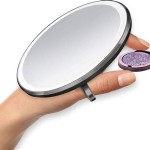Can You Glue Mosaic Tiles to a Mirror Wall Tile Surface?
The question of adhering mosaic tiles to a mirror wall tile surface is a common one for those looking to embellish or personalize their living spaces. While seemingly straightforward, the success of such a project hinges on several factors, including the type of adhesive used, the preparation of the surfaces, the specific characteristics of the mosaic tiles and the mirror tiles themselves, and the environmental conditions in which the adhesion takes place. A thorough understanding of these elements is crucial to achieving a durable and aesthetically pleasing result.
Mirrors, by their nature, present a particularly smooth and non-porous surface. This contrasts with many other common substrates, such as drywall or wood, which offer some level of grip for adhesives. The reflective coating on the back of the mirror further complicates matters, potentially reacting with certain types of adhesives. Therefore, careful selection of materials and meticulous preparation are paramount.
Mosaic tiles, too, exhibit a degree of variability. They can be made of glass, ceramic, stone, or even metal. Each material possesses unique properties that influence its adhesion characteristics. The size and shape of the mosaic tiles also play a role, as smaller tiles generally offer a larger surface area for bonding, which can improve overall adhesion.
Understanding the Challenges of Bonding to Mirror Surfaces
The principal challenge in adhering mosaic tiles to mirror wall tiles is the inherently smooth and non-porous nature of the mirror surface. Traditional adhesives often rely on penetrating the substrate to create a mechanical bond. This penetration is impossible with a mirror, meaning the adhesive must form a strong surface bond alone. Moreover, the reflective coating on the back of the mirror can be vulnerable to chemical reactions with certain adhesives, potentially leading to discoloration, delamination, or even damage to the mirror itself. The expansion and contraction rates of dissimilar materials also need consideration. If the mosaic tiles and mirror tiles expand and contract at different rates with temperature fluctuations, the differential stress can compromise the adhesive bond over time.
Moisture is another potential adversary. Bathrooms and other areas with high humidity can introduce moisture behind the mosaic tiles, which can weaken the adhesive bond and foster the growth of mold or mildew. Proper ventilation and the use of moisture-resistant adhesives are essential in such environments. The weight of the mosaic tiles is also a significant factor, especially when adhering to a vertical surface. The adhesive must be capable of supporting the combined weight of the tiles without sagging or detaching.
Finally, the existing condition of the mirror wall tile is important. Cracks, chips, or loose tiles will compromise the integrity of the bond. Addressing any pre-existing damage before attempting to adhere mosaic tiles is crucial for long-term success. Furthermore, the presence of any existing coatings or sealants on the mirror surface can interfere with adhesion, necessitating their removal prior to application.
Selecting the Right Adhesive
Choosing the appropriate adhesive is the most critical step in ensuring a successful mosaic tile application to a mirror surface. Not all adhesives are created equal, and selecting the wrong one can lead to failure. The ideal adhesive should possess several key characteristics. Firstly, it should be specifically formulated for use on non-porous surfaces like glass and mirrors. This usually means it is chemically designed to create a strong surface bond without relying on penetration.
Secondly, the adhesive should be moisture-resistant, particularly if the application is in a bathroom or other humid environment. Look for adhesives that are labeled as waterproof or water-resistant. Thirdly, the adhesive should be flexible enough to accommodate the expansion and contraction differences between the mosaic tiles and the mirror tiles. This flexibility helps to prevent cracking or delamination due to temperature fluctuations. Epoxy-based adhesives, while offering excellent strength and water resistance, can sometimes be too rigid for this application and may not be the best choice.
Modified silicone adhesives are often a good option for adhering mosaic tiles to mirrors. They offer excellent adhesion to glass, are highly water-resistant, and possess good flexibility. However, it's essential to choose a silicone adhesive that is specifically formulated for mirror applications, as some silicone adhesives can react with the reflective coating on the back of the mirror. Another viable option is a construction adhesive labeled for use on mirrors and glass. These adhesives are typically formulated to provide a strong, permanent bond while minimizing the risk of damage to the mirror's reflective coating. Polyurethane adhesives are also known for their strong bonding capabilities, but like epoxy adhesives, their rigidity might be a concern in some situations. Carefully read the manufacturer's instructions and product specifications before making a final decision.
Preparing the Surfaces for Optimal Adhesion
Proper surface preparation is just as important as selecting the right adhesive. Even the strongest adhesive will fail if applied to a dirty or improperly prepared surface. The first step is to thoroughly clean the mirror tile surface. Use a mild detergent and water to remove any dirt, grease, or grime. Avoid using harsh chemicals or abrasive cleaners, as these can damage the mirror's reflective coating.
After cleaning, rinse the mirror surface thoroughly with clean water and allow it to dry completely. Once the mirror is dry, consider lightly abrading the surface with fine-grit sandpaper. This will create a slightly rougher surface that the adhesive can grip onto more effectively. Be careful not to scratch the mirror excessively. The goal is simply to create a subtle texture, not to remove the reflective coating. Wipe away any sanding dust with a clean, damp cloth before proceeding.
The mosaic tiles also require preparation. Ensure they are clean and free of any dust or debris. If the mosaic tiles are made of a porous material, such as natural stone, consider applying a sealant to the back of the tiles before adhering them to the mirror. This will prevent the adhesive from being absorbed into the tiles, ensuring a stronger bond. Finally, it is beneficial to dry-fit the mosaic tiles onto the mirror surface before applying the adhesive. This allows you to visualize the final design and make any necessary adjustments before the adhesion process begins. This step also helps identify any tiles that may need to be cut or trimmed to fit properly.
Once the adhesive is applied, use appropriate tools, such as notched trowels, to ensure even distribution. Consider using spacers between the mosaic tiles to maintain consistent grout lines. After the adhesive has cured, apply grout, following the manufacturer's instructions. Clean excess grout from the mosaic tiles and mirror carefully. After the grout has fully cured, inspect the installation for any imperfections or loose tiles. Address these issues promptly to prevent further damage or delamination. Regular maintenance, such as cleaning the grout lines and inspecting for any signs of moisture damage, will help to prolong the life of the mosaic tile installation.

How To Mosaic Tile A Mirror Caffeine And Cabernet

How To Mosaic Tile A Mirror Caffeine And Cabernet

How To Mosaic Tile A Mirror Caffeine And Cabernet

How To Mosaic Tile A Mirror Caffeine And Cabernet

How To Mosaic Tile A Mirror Caffeine And Cabernet

No Grout Mosaic Tile Mirror The Diy Village

Make A Mosaic Mirror 8 Steps With Pictures Instructables

How To Hang Mirrors On Tile 3 Ways A Bonus The Palette Muse

Mirror Mosaic Warning How To Blog

Diy Mosaic Wood Tile Mirror Frame Addicted 2 Decorating








